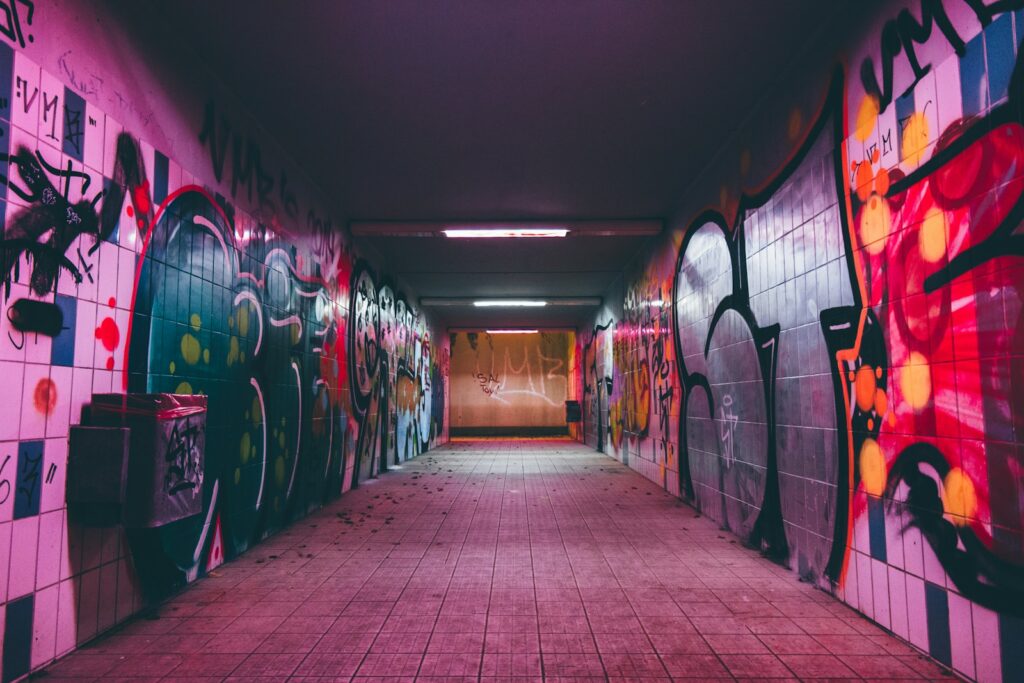
## Introduction
The art world has recently been rocked by a series of incidents where galleries across New York City have been targeted with anti-Israel graffiti and splattered with red paint, resembling blood. These acts of vandalism have sparked a debate within the art community, with some gallery owners choosing to keep the attacks secret while others decry it as rank antisemitism. This article will delve into the details of these incidents, exploring the different perspectives and reactions within the art world.
The Acts of Vandalism
Over the past few weeks, numerous art galleries in New York City have fallen victim to acts of vandalism. From small hipster operations on the Lower East Side to grand institutions on Fifth Avenue, the attacks have spanned a wide range of galleries. The vandalism includes signs quoting purported Palestinian death tolls, messages urging galleries to stop working with Zionists, and the graffiti of the word “Intifada,” a term associated with the Palestinian uprising, in red letters. Additionally, many galleries have been splattered with red paint, symbolizing blood.
Gallery Reactions
The gallery owners’ reactions to these acts of vandalism have been divided. Some have chosen to keep the attacks secret, not wanting to lend credibility to the vandals by publicizing their actions. Others argue that as artists, it would be hypocritical to repress expression, even if it is in the form of graffiti. They believe in fostering a safe and open workplace that respects differences of thought within the community. However, there are those who denounce the attacks as rank antisemitism, drawing comparisons to the marking of Jewish businesses in Germany before the Holocaust.
The Targeted Galleries
Several prominent galleries have been specifically targeted in these acts of vandalism. Pace Gallery, known for representing Israeli artist Michal Rovner, was attacked over its representation of her video work titled “Signals,” which calls for the return of hostages taken by Hamas during an attack. The elite gallery had to close temporarily to remove the graffiti. Another targeted gallery was Lévy Gorvy Dayan, which had previously spoken out against an open letter in support of Palestine on Artforum due to it only representing one side. The Neue Galerie, owned by Ronald S. Lauder, the president of the World Jewish Congress, was also hit with red paint.
The Art Community’s Response
The art community has been split on how to respond to these acts of vandalism. While some are horrified and believe that the general public and even many in the art world are unaware of the hate-fueled nature of these incidents, others argue for the vandals’ freedom of expression and opinion. They believe that gallery spaces should allow for diverse viewpoints and that the attacks should not be suppressed. One gallery owner even stated that the incidents brought the galleries together, as they joined forces to clean up the mess.
A Reminder of History
The attacks on these galleries have evoked memories of Germany before the Holocaust for some. They draw parallels between the marking of Jewish businesses in the past and the current acts of vandalism. The people responsible for these attacks, like those in Germany, are proud of their actions and believe they are for the greater good. The art world insiders who make this comparison are concerned that these incidents may be indicative of a larger problem and should not be ignored.
Controversial Perspectives
Not all gallery owners believe they were specifically targeted due to their connection to Middle Eastern politics. They argue that they have collectors of all backgrounds and that their galleries were hit as part of a wider swath of affected galleries in the neighborhood. Some even express support for the vandals’ freedom of expression and opinion, emphasizing that gallery spaces should be platforms for diverse voices. However, this perspective has also drawn criticism from those who denounce the acts as antisemitism.
Cleaning Up and Moving Forward
Despite the controversy and different reactions, the affected galleries have come together to clean up the mess left behind by the vandals. They used power washers to remove the paint quickly and put the incidents behind them. Their main concern was not to give anyone an opportunity to virtue signal on their backs. The unity forged through this shared experience has helped the galleries support each other and move forward.


